The oldest confirmed non-clonal organism on earth is the Great Basin bristlecone pine though there are likely older trees yet to be discovered around the world. Even so, let’s discover the oldest confirmed bristlecone pine that is more than a couple hundred years older than the Great Pyramids!
What is a Great Basin Bristlecone Pine?
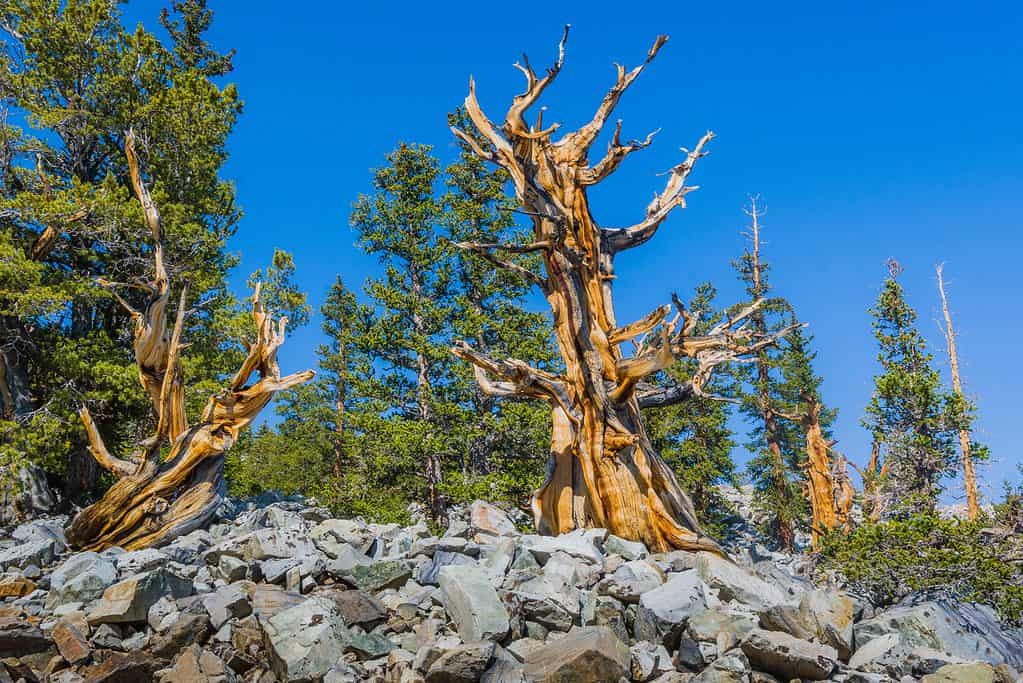
Great Basin bristlecone pine trees are one of three species of bristlecone pines.
©Daryl A. Horton/Shutterstock.com
The Great Basin bristlecone pine is one of three species of bristlecone pines. They’re famous for surviving harsh conditions for millennia. The most ancient tree grows in California though ancient bristlecone pines also live in Nevada, Colorado, and Utah.
Bristlecone pines can grow right below the tree line. While they do grow throughout the forest, the ancient trees only exist around 10,000 feet in elevation where most things don’t survive. The oldest trees are usually no more than twenty-five feet tall.
Trees at higher elevations grow slower than trees from lower elevations because harsher conditions stunt their growth. However, in recent years, trees at higher elevations are growing much faster than they have in the past. This is due to increased average temperatures as a result of climate change.
Methuselah: Discover the Oldest Bristlecone Pine
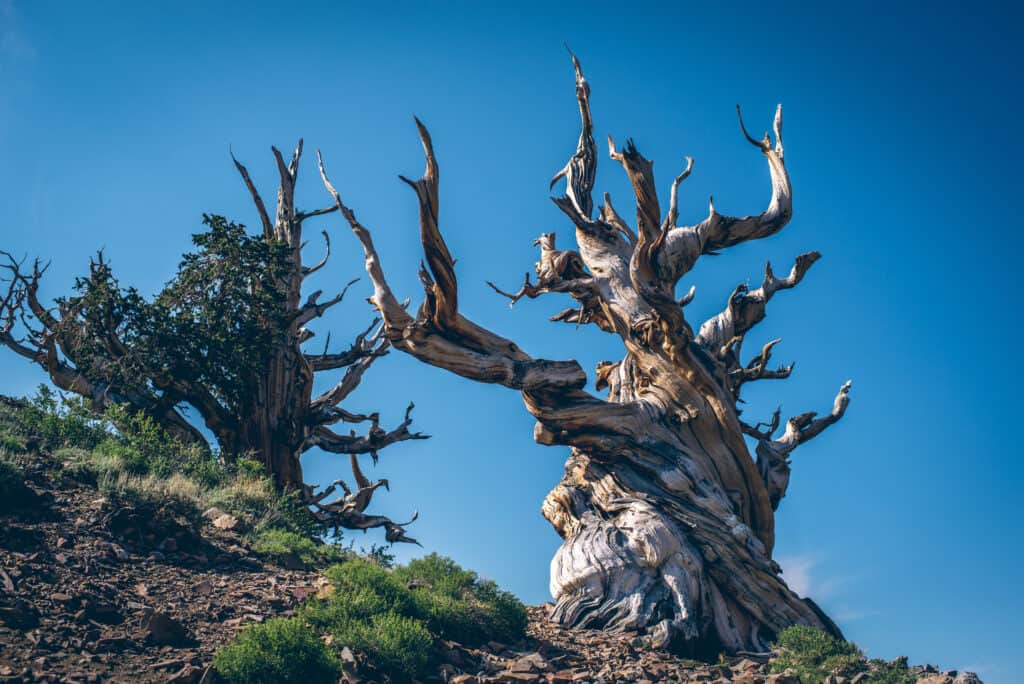
The oldest living thing on earth is a Great Basin bristlecone pine tree called Methuselah, in the White Mountains in California.
©doliux/Shutterstock.com
Methuselah is an ancient Great Basin bristlecone pine and the oldest living thing on earth at around 4,854 years old. This is around three hundred and fifty years older than the Great Pyramids in Egypt!
The Methuselah tree grows at an undisclosed and remote location inside the Inyo National Forest in an area called the Ancient Bristlecone Pine Forest. It’s located in the White Mountains near Bishop, CA. There is a four-and-a-half-mile-long trail called the Methuselah Grove trail that takes visitors into the Methuselah tree’s immediate area.
The tree is named after the biblical figure Methuselah who is the longest-lived human in the bible. He supposedly died at 969 years old before the Great Flood in the Old Testament.
How Old are the Great Pyramids?
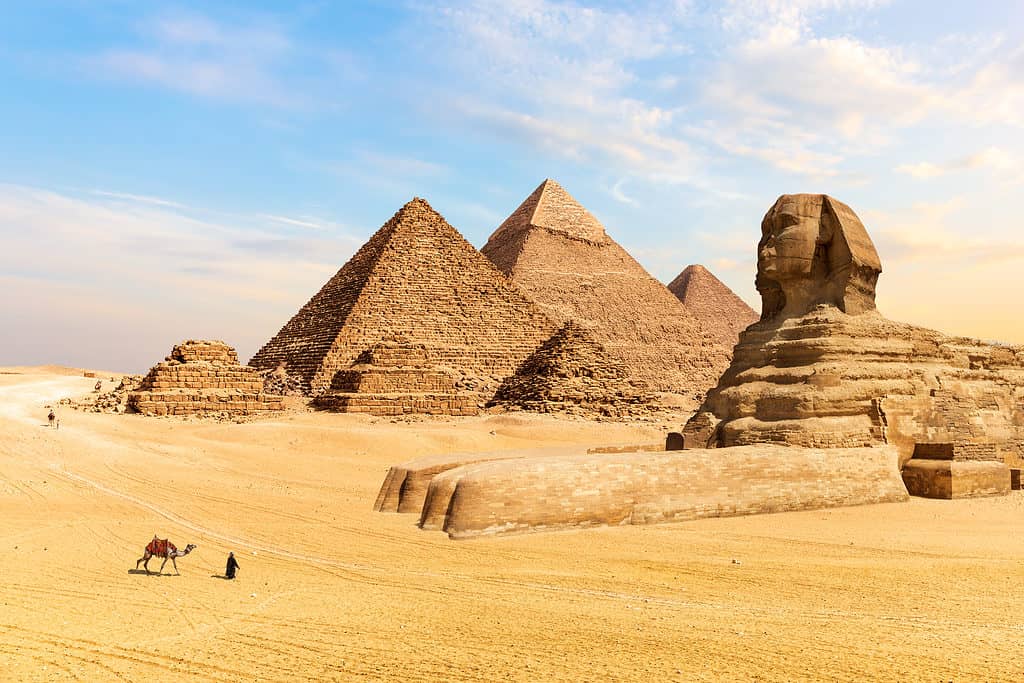
The Egyptian pyramids are approximately 4,500 years old. Methuselah took root 4,800 years ago, making the bristlecone pine even older than the pyramids.
©AlexAnton/Shutterstock.com
The pyramids of Egypt are around 4,500 years old. However, the oldest bristlecone pine named Methuselah took root around 4,800 years ago. This makes the tree older than the pyramids!
The Great Pyramid of Giza, which is the largest of the Great Pyramids, was the tallest structure made by humans for over 3,800 years. The stepped blocks left today weren’t meant to be seen and originally supported more expensive materials that were stripped off. These pyramids in Egypt used to be covered in smooth white limestone and were capped with gold or another precious metal.
Why Bristlecone Pines Are the Oldest Species
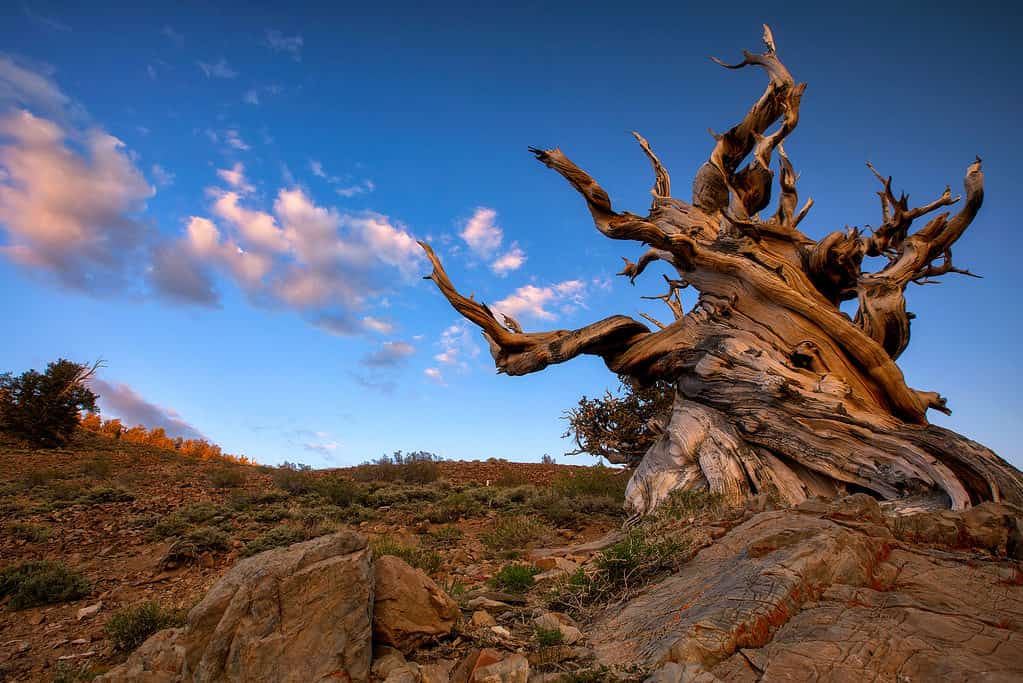
Being resistant to rot, insects, and fungi, and capable of surviving in the harshest of conditions, bristlecone pine trees are extremely long-lived.
©Bill45/Shutterstock.com
Bristlecone pines are the oldest living things on earth because they’re resistant to rot, insects, and fungi. They’re known as extremophiles since they’re able to survive in conditions where most other species cannot.
The harsh and arid environment stunts the tree’s growth and permanently twists it. This makes its wood extremely dense. This combined with the resin the tree produces makes it mostly impermeable to the things that destroy most other trees.
The ancient trees grow in soil made of limestone which is unsuitable for almost all other plants. This means that when a fire breaks out, it likely won’t jump to a bristlecone pine growing in this kind of dirt because it is isolated. Their isolation protects them from forest fires.
The roots of bristlecone pines are designed for longevity. A large root supports only the part of the tree above it. Other parts of the tree are supported by their roots.
As erosion exposes a root and it dies, only its part of the tree dies while the other sections live on. Most of the ancient trees have more dead segments than alive ones. Therefore almost all ancient trees have only a small grouping of live branches.
Bristlecone pines are not subject to senescence which is a term for biological aging. They continue to produce viable seeds and they show no cellular mutations the older they get. It seems they are not biologically programmed to die and only do so as a result of outside influences.
Unconfirmed: The Alerce Milenario May Be the Oldest Thing on Earth
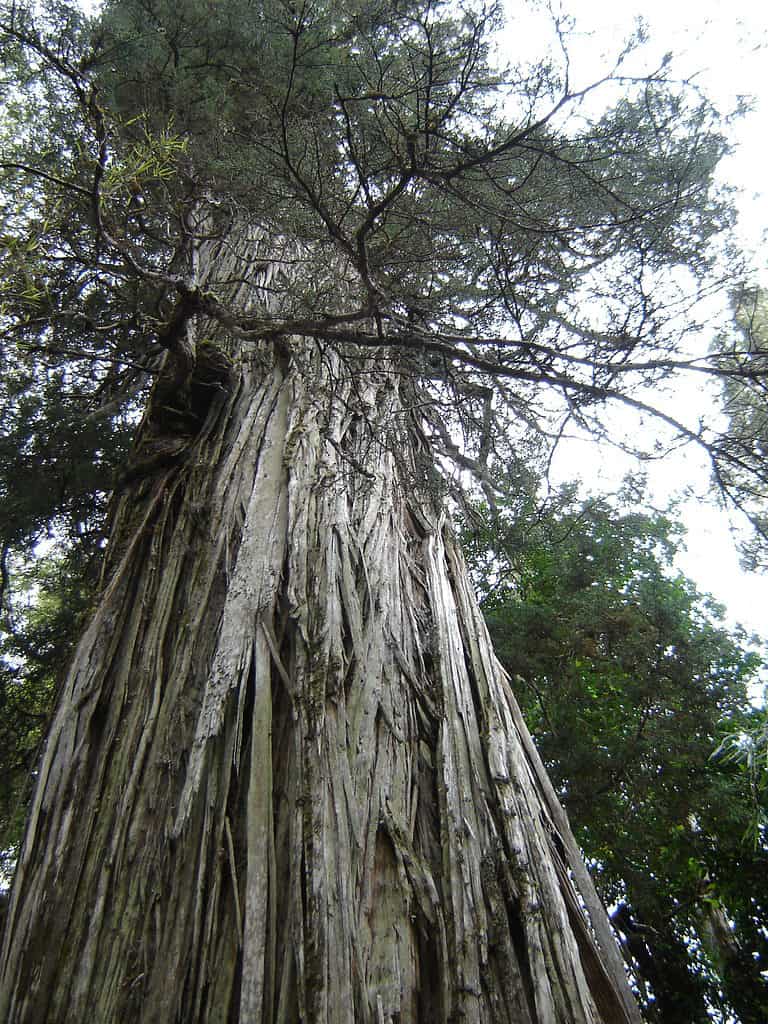
While Methuselah is the known oldest living thing on earth, some scientists dispute that, arguing that Alerce Milenario is over 5,000 years old.
©PatagoniaArgentina/Wikimedia Commons – License
Some scientists believe that a tree called the Alerce Milenario is the oldest tree on earth at over 5,000 years old. This means that this specific tree may be over half a century older than the Great Pyramids in Egypt. It’s a Patagonian cypress tree located at the Alerce Coster National Park in Chile.
This tree is of an unconfirmed age because official research has yet to be released. Some scientists are skeptical of the methods used to age this tree though others remain optimistic.
A little over one-fourth of the tree is still alive and most of what’s living is part of the root system. Visitors that walk under the tree are trampling the roots and putting the tree at risk. It’s hoped that officially aging the tree will drive interest in increased conservation.
What is the Oldest Clonal Species on Earth?
The oldest clonal species on earth is a forest of Neptune grass in the Mediterranean Sea near Spain. It’s believed that this five-mile-wide meadow has been self-cloning for over 100,000 years.
Neptune grass is endemic to the Mediterranean Sea and a meadow of this grass absorbs around fifteen times more carbon dioxide than an equal area of the Amazon rainforest. This means that this grass is important to the maintenance of the earth’s ecosystems.
Neptune grass grows to depths of up to one hundred and fifteen feet and its leaves grow up to five feet tall. Because it is sensitive to pollutants and temperature changes, it’s a good indicator of environmental conditions. It’s in decline as a result of climate change.
Neptune grass dies or uproots and forms floating balls in the ocean. These balls trap ocean plastics which may be useful in condensing waste areas. However, the collected plastic is also being eaten by the invertebrates that live in these grass balls.
This may harm the entire ecosystem. A diverse group of animals relies on these invertebrates as a primary food source. The effects of plastic ensnared in floating Neptune grass needs to be studied further.
Up Next…
- What is the Oldest River in the World?
- The World’s Oldest Sea Turtle
- The 10 Oldest Languages in the World
The photo featured at the top of this post is © dlhca/Shutterstock.com
Thank you for reading! Have some feedback for us? Contact the AZ Animals editorial team.






